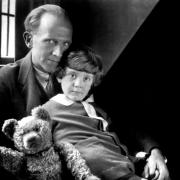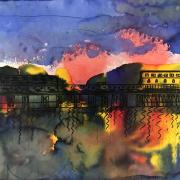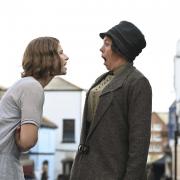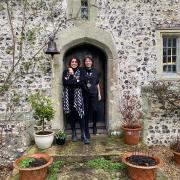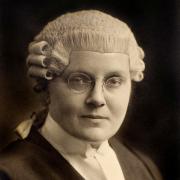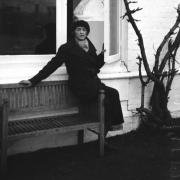Martin Frost specialises in a style of painting unlike any other. Duncan Hall visits him in his Worthing studio to find out more

A fore edge painter is unlike most other artists in that their work hides in plain sight. Rather than being displayed on art gallery walls this critically endangered art hides away within the leaves of books – waiting to be discovered by unsuspecting readers as they open a book and gently fan its pages.
Worthing’s Martin Frost knows precisely how endangered his art is – because he is currently the only professional practitioner of the nearly lost skill in the world. Last year he was presented with a Heritage Crafts Association Award to prove his unique position after being nominated by his daughter, dancer and musician Rachel.
The 67-year-old’s joy at his craft is plain to see as he shows off a selection from his extensive back catalogue. They range from an antique Life of Columbus featuring the Santa Maria and a portrait of the explorer on its pages, to a modern Harry Potter – which Martin has bound in leather and created an image of the Hogwarts Express hiding within the edges of silver gilt pages scattered with holographic stars.
“It’s an exclusively British art,” he says. “The earliest vanishing fore edge paintings date back to 1660. They were made popular by a couple of English bookbinders in the 1780s.” Where Martin’s fore edge paintings differ from the classical examples is that he ensures his images relate closely to the book they are painted on. “The tradition was to do pretty picturesques – landscapes, seascapes and townscapes,” he says. “You would get a nice copy of Ivanhoe which just had a view of London on the edge of the pages. It’s much more interesting to create an image that reflects the book – it’s crazy not to!”

Other innovations he has introduced in his own fore edge paintings are creating two separate images on each side of the page, so a different image appears depending on which way the book is held up; split fore edge paintings – useful for big books with obvious divisions such as the Bible; and all edges paintings – which use not only the long leaves but also the shorter end pages. “I’m pushing the boundaries,” he says. “I’m looking forward to seeing other people take it on from there.”
His work is generally divided between creating new images on antiquarian books, and commissions for wedding journals or birthday presents. He even has a sideline in creating more adult “under the counter” material – adding to the surprise element of fore edge painting.
Martin’s father was a professional portrait artist, and Martin himself studied art at what was Worthing’s West Sussex College, now Northbrook College. He started a career in theatre design, working at theatres including Worthing’s Connaught Theatre, before he came across fore edge painting in the late 1970s while working on scenery at Glyndebourne.
“I met Don Noble who had been a fore edge painter for a long time,” says Martin, who has continued his interest in theatre through amateur dramatics and dancing with Sompting Village Morris. “He showed me what he was doing – I thought it was fun, interesting and strange, so I had a go. There was a logical transfer about 42 to 43 years ago – I’ve been a full time book-painter for that period.”

Martin uses a special press to hold the book leaves in position and paints with watercolours using a dry brush method. There are lots of elements he has to keep in mind while working on his books. “You are working on a very funny surface – it’s stepped,” he says. “If you used a standard British watercolour technique the capillary action of the paper would take the paint into the book. You also have to make sure the stain doesn’t glue the pages together. It’s a lot of technique. I have refined the style over the years.”
Martin now leads fore edge painting workshops in the UK and North America, but despite showing the skill to more than 100 people he is yet to see anyone else take up the mantle as yet. He feels there is a lot of mileage still in the skill, which has only been enhanced by the rise of the digital world. “They are books as artefacts,” he says. “The books are all individually done – they don’t really transfer into the digital world. There are more books in the world now than there have ever been. You can’t hang fore edge paintings on the wall – it’s about now you see it, now you don’t. YouTube has made it more accessible. I’m slowly putting my archive on Pinterest so anyone can see them.
“I’ve never had anybody not been surprised when they open up a book – even those who have seen a few fore edge paintings before. It’s that little combination of novelty and excitement – I’m so lucky to have a job that I can get excited about, and give that out to people. I’m always curious about my next job.”
More…
• Hastings-based artist Claudia De Grandi - Brazilian-born but Hastings-based artist Claudia De Grandi is using big canvases to reconnect with elemental nature. Duncan Hall visited her studio




